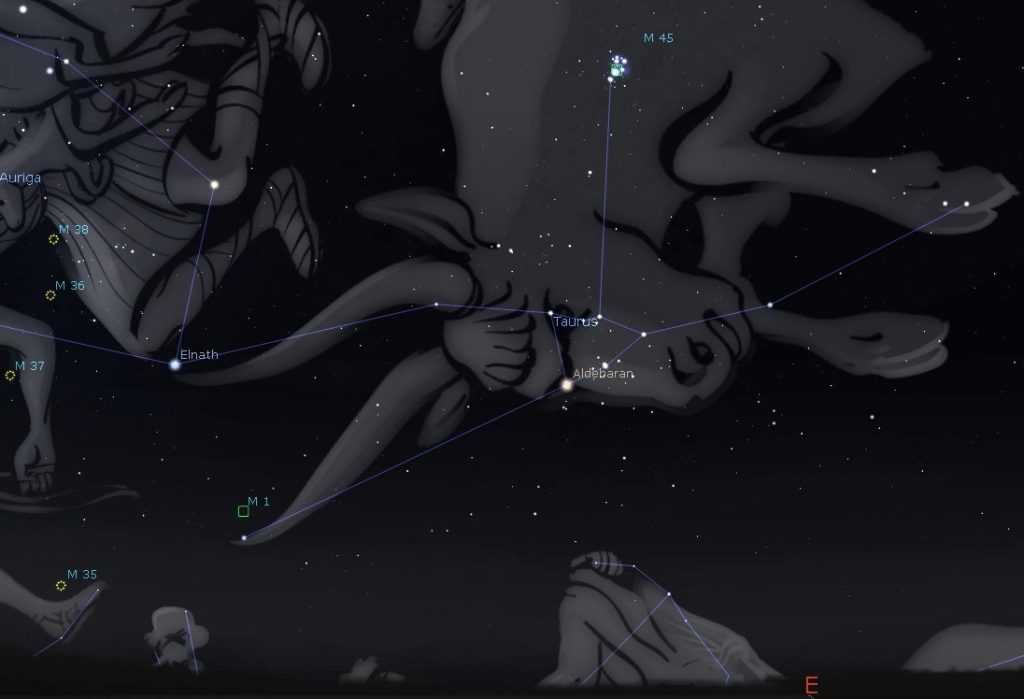This Week’s Sky at a Glance, 2019 October 19 – 26 ~by Curt Nason
The Pleiades star cluster is rising now in the early evening. Also known as M45 or the Seven Sisters, and sometimes mistaken to be the Little Dipper, this compact eye-catcher represents the shoulder of Taurus the Bull. Over the next two hours the rest of the constellation clears the eastern horizon; in particular, the V-shaped Hyades star cluster anchored by orange Aldebaran, and the two stars marking the tips of the bull’s horns.
In mythology, Zeus changed himself into a beautiful white bull to attract the attention of Europa, a princess of Sidon. She was taken by its gentleness and made the mistake of climbing on its back. Bully Zeus took off to the nearby seashore and swam all the way to Crete, where he changed back into his godly form and completed his conquest. The result was a baby boy who was named Minos, and he grew up to become the first King of Crete.
One of the horn stars of Taurus had been shared with the constellation Auriga. This star, Alnath, was officially assigned to Taurus when the constellation boundaries were set by the International Astronomical Union (IAU) in the late 1920s. Taurus is one of the zodiac constellations; the ecliptic passes between the Pleiades and Hyades and also between the horn-tips. Since the Moon’s orbit is tilted to the ecliptic by about five degrees, at times it can be seen passing in front of the Pleiades and Aldebaran.
This Week in the Solar System
Saturday’s sunrise in Moncton is at 7:41 am and sunset will occur at 6:26 pm, giving 10 hours, 45 minutes of daylight (7:45 am and 6:32 pm in Saint John). Next Saturday the Sun will rise at 7:51 am and set at 6:14 pm, giving 10 hours, 23 minutes of daylight (7:54 am and 6:21 pm in Saint John).
The Moon is at third quarter on Monday, scuttling through the Beehive star cluster (M44) in Cancer when it rises after midnight that night. Jupiter sets around 9 pm this week but it is still high enough in twilight to show detail through a telescope, although Saturn with its rings is the evening highlight. Venus can be seen with binoculars shortly after sunset, and Mercury is at its greatest elongation from the Sun this weekend, about 7 degrees left of Venus. The Orionid meteor shower, one of two showers arising from remnants of Halley’s Comet, will add a few extra meteors per hour over Monday evening and Tuesday morning.
The provincial astronomy club, RASC NB, is giving astronomy presentations at Moncton High School on the afternoon of October 19. For details, see their website.
Questions? Contact Curt Nason.

